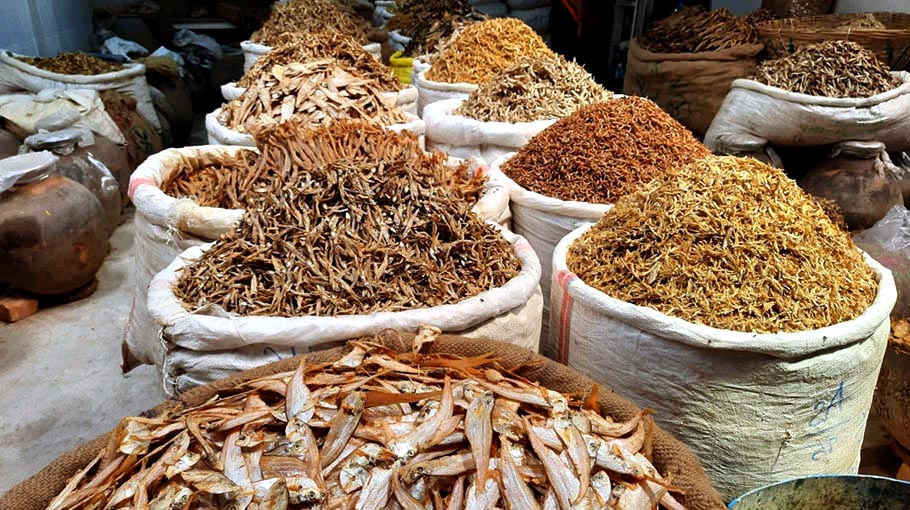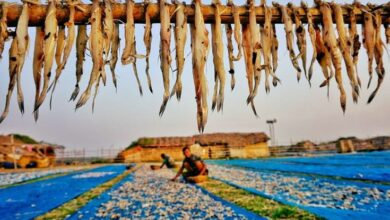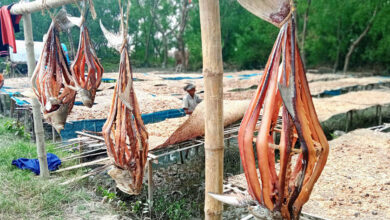
Drying is the oldest and least expensive way of preserving fish. Removing water from food by drying it is an efficient way to prevent germs and enzymes from ruining it. The dry fish makers utilized salts to remove the water from the fish body before drying it in the sunshine. 3-4 kg of salt is needed per 100 kg of uncooked fish.
Economical value of dry fish:
Because of its excellent nutritional value, wonderful taste, scent, and distinct flavor, dry fish (locally known as Shutki) is a popular and traditional food item among Bangladeshi. On the supply side, dried fish industry gives livelihood, money, and job to millions of people. Small- and large-scale fishers and processors, as well as dealers at various scales ranging from huge urban wholesalers to small urban and rural stores, are all involved. Women predominate in the fish-drying sector in many places, especially South Asia, where women’s labor outside the home has traditionally been severely restricted. Every year, a substantial volume of freshwater and marine capture fisheries is processed into dried, salted, and fermented fish products. These products are in high demand in the foreign market as well as the domestic market, which helps to generate foreign cash.
Nutritional value of dried fish:
In general, dry fish is a delicious and healthful diet that is high in protein and low in calories when compared to other animal protein sources such as beef. Dry fish contains high-quality proteins, healthful fatty acids, including long-chain omega-3 fatty acids like eicosapentaenoic acid (EPA) and docosahexaenoic acid (DHA), and is a unique supply of critical elements including iodine, zinc, copper, selenium, and calcium.
Basic concept of fish drying:
Drying preserves food by lowering the moisture content to a point where microbes and most intrinsic enzymes become inactive. Conventional commercial dry fish has a moisture content of 18-25%, any value less than this value indicates a higher quality of dry fish.
Because the moisture content and water activity are reduced after drying, germs cannot multiply and grow to ruin the fish. This will aid in the long-term preservation of the fish. Lowering water activity has an effect on the chemical and enzymatic changes in food. When water activity falls below 0.6, microbiological development is much halted.
What are the preservatives used in dried fish?
Dry fish retains more protein than raw fish. After preparing dried fish with organic preservatives such as Neem leaf powder and Paprika, they can be utilized to reduce pest and fungus infestations. These organic preservatives are safe for human consumption.
How long can dry fish be stored?
Properly treated and preserved fish can last 6 to 12 months without spoiling! That’s a lot of time, and it’s a terrific way to preserve food for a hike, camping, as a snack on the route, or simply to eat at home if you prefer the flavor.
Bangladesh’s dried fish sector has traditionally played an important role in food, nutrition, job creation, and the economy. If dry fish producers give extra care to produce safe and hygienic dry fish, then this industry can contribute in the improvement of national economy.
Farhana Islam
Agriculturist, Researcher


